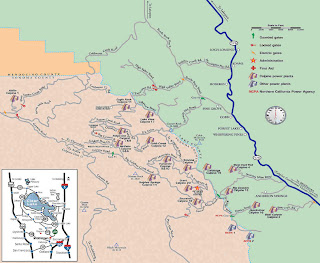
It can produce up to 275 kilowatts of electricity—about enough for a one hundred unit apartment complex, and it can also operate with a relatively low temperature difference (120 degrees) between the heat source and the ambient temperature. You can find a whole bunch of information about it here: http://www.commercial.carrier.com/commercial/hvac/product_technical_literature/1,3069,CLI1_DIV12_ETI4906_PRD1638,00.html.
The largest geothermal power complex in the world is located at The Geysers.
It’s about seventy-five miles north of San Francisco and borders on Sonoma Valley. The power plants located there produce 725 megawatts and provide about 60% of the power needs between the Golden Gate bridge and Oregon border.

Of course nothing is perfect, so although geothermal power works, is reliable and is cheap to operate, it does have one large drawback—the capital costs for a system are very large. In Texas you probably would need to drill a hole 8,000 to 10,000 feet deep to find a large enough temperature difference to make a geothermal system work. Drilling that far down costs about $1 million per hole, and you’d need two of them.
I would guess, though, that you might be able to find a couple of dry holes that you could use somewhere here in Texas, and that would bring the cost down substantially.

No comments:
Post a Comment